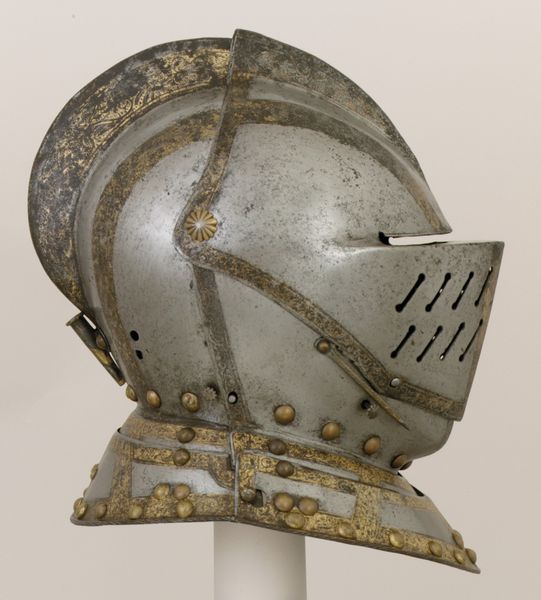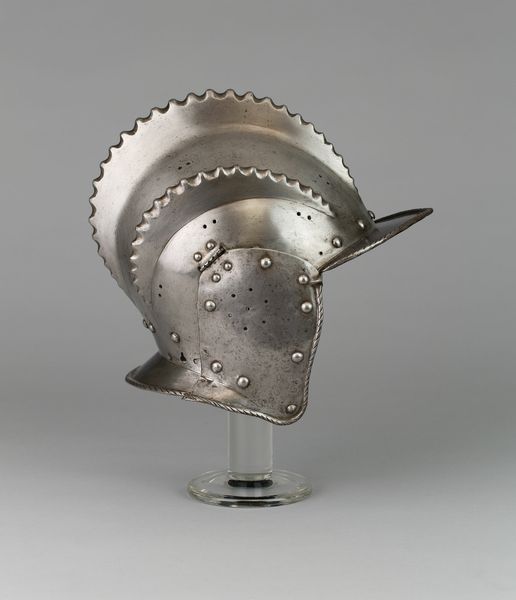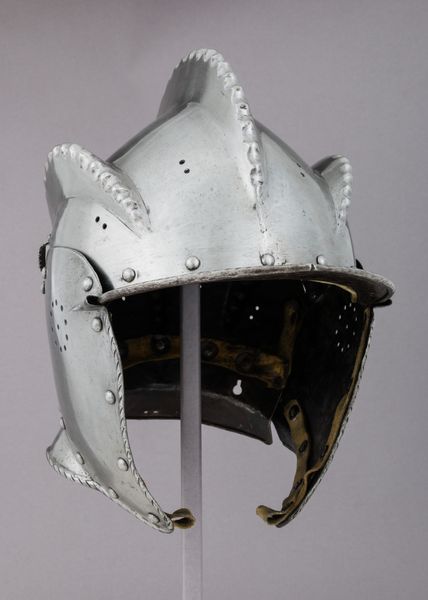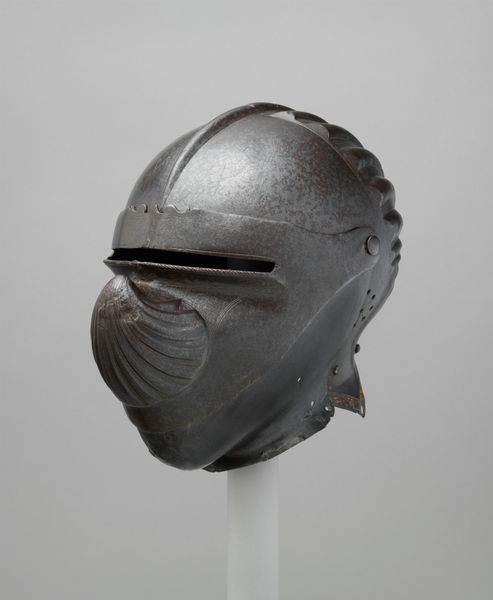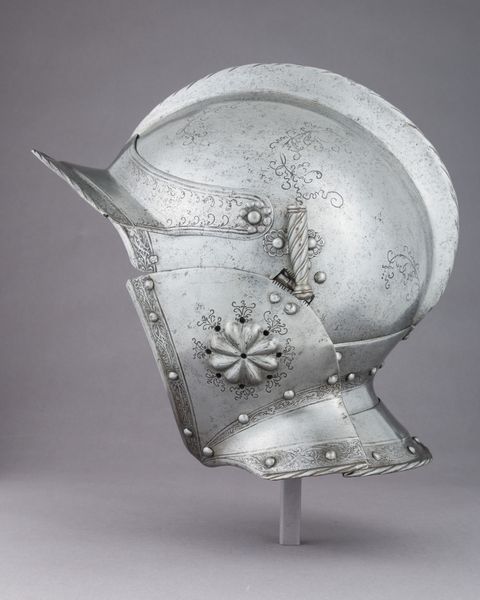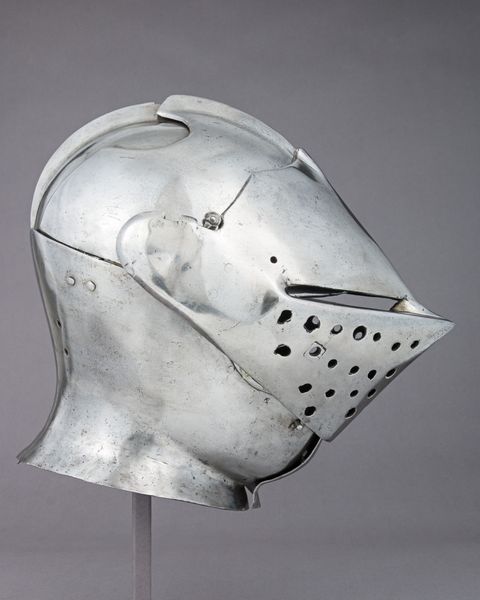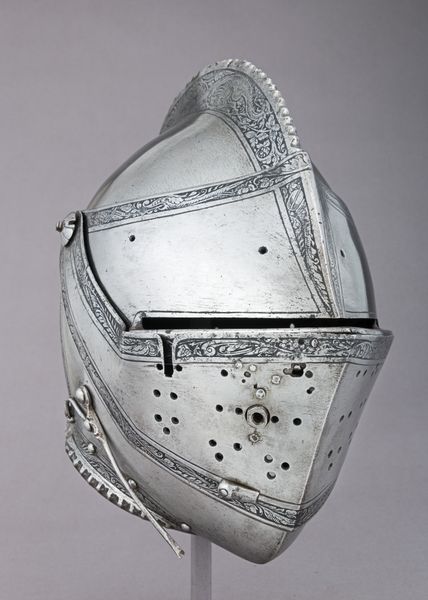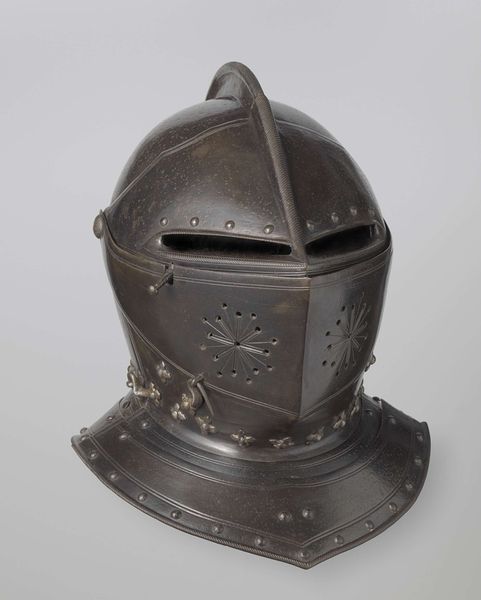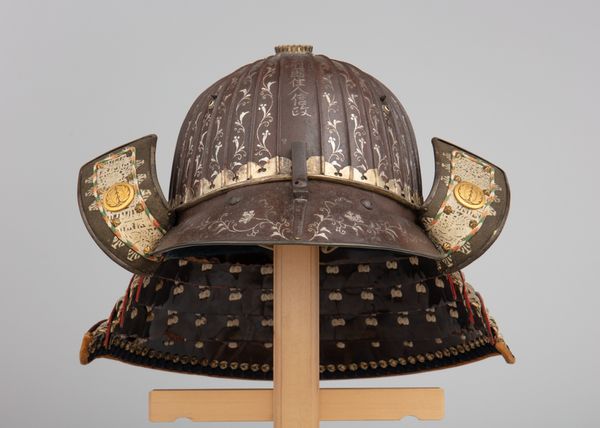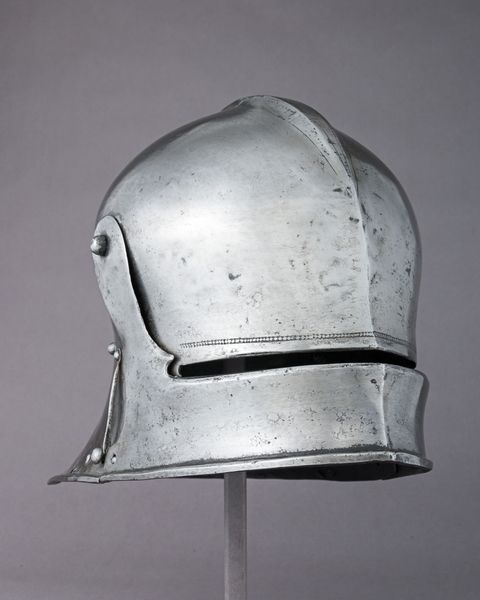
Helmet (<i>Hoshi- Kabuto</i>) in the 16th-Century Style 1625 - 1775
0:00
0:00
metal, sculpture
#
medieval
#
metal
#
asian-art
#
japan
#
sculpture
#
armor
Dimensions: H. 11 3/4 in. (29.9 cm); W. 13 in. (33 cm)
Copyright: Public Domain
Saotome Ienari crafted this *Hoshi-Kabuto* helmet in the 18th century, emulating the 16th-century style with iron and other materials. The helmet's form is defined by numerous raised rivets, known as *hoshi*, hammered meticulously across its surface. These aren't merely decorative; each one represents a point of attachment, securing the individual plates that form the helmet's robust structure. The iron is worked with such skill as to create both protection and a powerful visual texture. Note also the decorative elements, like the pinecone on the front, and the elegant neck guard, or *shikoro*, made of lacquered plates laced together. Consider the time and skill involved in creating each *hoshi*, and the overall assembly of this complex object. This wasn't just metalwork; it was a highly specialized craft tradition, demanding years of training. The *Hoshi-Kabuto* represents a fusion of functionality and artistry, elevating the craft of armor-making to a high art form.
Comments
No comments
Be the first to comment and join the conversation on the ultimate creative platform.


